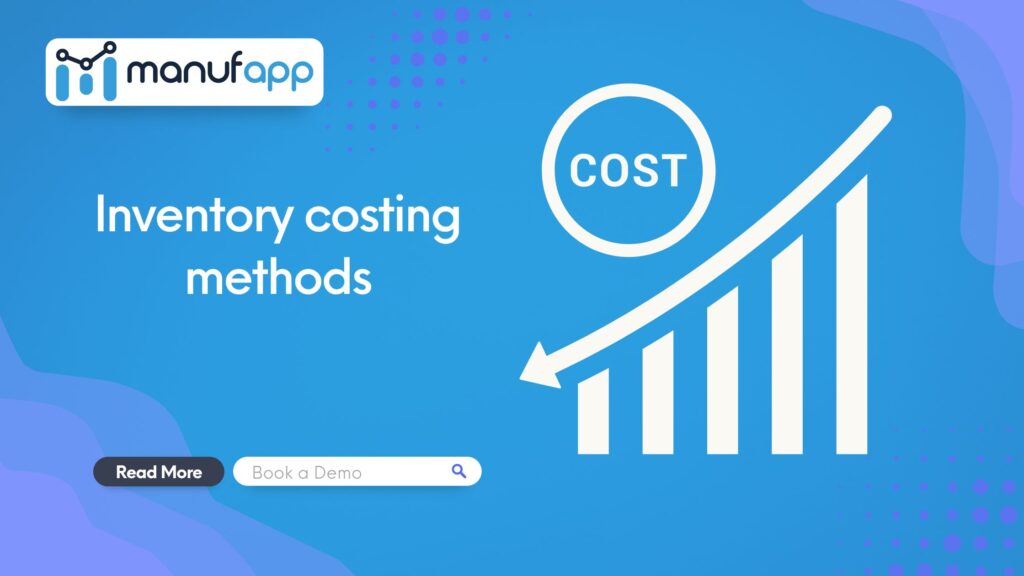INTRODUCTION:
The primary goal of inventory costing is to provide financial clarity by achieving accuracy in a company’s financial statements. A point to remember here is that different methods provide different results and once a company selects a method, regulators expect the company to adhere to it year after year. Therefore, a company must consider all the potential advantages and disadvantages of each method and choose carefully.
INVENTORY COSTING METHODS:
- First In, First Out (FIFO): Inventory or assets first brought in i.e. the oldest inventory items are sold first. This also indicates that the remaining items/inventory are those bought latest. FIFO is a major determinant of COGS and Gross Profit. In times of inflation, First- In goods are usually cheaper and thus when cost per unit goes up, and selling price per unit stays constant, you are able to make the highest profit in earlier periods since you sell the oldest inventory first. A higher profit means higher gross income which in turn can translate into a bigger tax bill.
- Last In, First Out (LIFO): Inventory or assets brought in last i.e. the newest inventory items are sold first, and the oldest inventory is sold later. Even in times of inflation, since the newest/ latest items in the inventory are sold first, COGS comes down, as a result companies are able to make low profits since they sell the newest and more expensive inventory first (Last- In). A low profit means lower gross income, because of which company has to pay a lower tax liability.
To understand the FIFO and LIFO methods better, let’s take an example of a company selling tables from his inventory maintained in January, February, March and April.
| MONTH | NO. OF UNITS OF TABLE | PRICE PAID ($) |
| January | 100 | 50 |
| February | 150 | 75 |
| March | 60 | 110 |
| April | 70 | 130 |
FIFO METHOD:
Suppose the company has to calculate cost of goods sold (COGS) for May, let’s assume 70 units of tables were sold.
Therefore, COGS = Number of tables * Price in January (assuming the company sells tables by FIFO method and will consume the oldest stock at $50 per unit of table.)
COGS= 70*$50= $3,500
Ending inventory value= 30*$50 (Remaining 30 units remaining from January stock after selling 70 units via FIFO method) + [(150*$75) +(60*$110) +(70*$130)].
Ending inventory value using FIFO = $28,450
LIFO METHOD:
Suppose the company has to calculate cost of goods sold (COGS) for May, let’s assume 70 units of tables were sold.
Therefore, COGS = Number of tables * Price in April (assuming the company sells tables by LIFO method and will consume the newest stock at $130 per unit of the table.)
COGS= 70*$130= $9,100
Ending inventory value= 0 (All 70 units sold from April stock after selling 70 units via LIFO method) + [(60*$110) +(150*$75) +(100*$50)].
Ending inventory value using FIFO = $22,850
INTERPRETATIONS OF FIFO AND LIFO METHOD:
From the above example, we observe both FIFO and LIFO methods give different values for COGS and ending inventory. As per the FIFO method, value of COGS is much lower than as per the LIFO method, since oldest/ cheaper inventory is sold first also the value of ending inventory as per FIFO method is higher as the remaining inventory is newest/ expensive one. We can thus conclude from the above example that FIFO method gives a lower value of COGS and a higher Ending Inventory which results in the company earning a higher gross profit and they have to pay a higher tax liability. As per the LIFO method, value of COGS is higher, but value of the Ending Inventory goes down since the newest/ expensive inventory is sold out first and the remaining inventory consists of old/ cheaper inventory. This results the company in earning lower gross profits and therefore they have to pay a lower tax liability.
- Weighted Average: Inventory is valued by calculating the average of all inventory costs and this average unit cost is further used to calculate COGS and Ending Inventory. This method is usually used in case of identical inventory items. Weighted Average Cost method is calculated using a simple averaging formula i.e.
WAC per unit = Total cost of goods available for sale / Total number of units available for sale.
Let’s take an example of a company that has the following inventory transactions during a month to understand this concept better.
Opening Inventory: 100 units at $10 each
1st Purchase: 200 units at $20 each
2nd Purchase: 300 units at $24 each
Sales: 400 units
Calculating the total cost of goods available for sale:
Total Cost= (Opening Inventory Cost) +(1st Purchase Cost) +(2nd Purchase Cost)
Total Cost= (100 units*$10) +(200 units*$20) +(300 units*$24) = $1,000+ $4,000+ $7,200= $12,200
Calculating the total number of units available for sale:
Total Units= (Opening Inventory Units) +(1st Purchase Units) +(2nd Purchase Units)
Total Units= 100 + 200 + 300= 600 units
Calculating Weighted Average Cost per unit:
Total cost of goods available for sale / Total number of units available for sale = $12,200/ 600 units
= $ 20.33
Calculating Cost of Goods Sold and Ending Inventory:
COGS= Units Sold* Weighted Average Cost per unit
= 400* $20.33
= $8,132
Ending Inventory= Remaining Units* Weighted Average Cost per unit
= (600-400) * $20.33
= 200* $20.33
= $220.33
INTERPRETATION OF WEIGHTED AVERAGE COST METHOD:
The Weighted Average Cost Method provides a balanced approach towards valuation of inventory as it avoids the extremes that can result by using FIFO and LIFO methods for inventory costing. This method is particularly useful in industries with frequent price fluctuations, as it smooths out the impact of these changes on financial statements. Weighted Average Cost method is also preferrable for businesses with diverse or frequently changing inventory items, as all units like COGS and Ending Inventory are valued using the same average cost, making it easier to manage and report inventory which leads to a uniform inventory valuation.
By averaging out costs, this method allows businesses to better understand the overall cost of inventory, which helps in identifying trends and manage costs more effectively. Weighted Average Cost method allows businesses to have a stable average cost, and therefore they can use more competitive pricing strategies without the risk of under-pricing or over-pricing due to fluctuating inventory costs.
- Specific Identification: As the name suggests, this method uniquely identifies and assigns the exact cost of each individual item in the inventory. This method is particularly used by businesses that deal with unique, high-value items that can be easily identified, such as jewellery, automobiles, and custom-made goods. Cost of each individual item is allotted using item serial number or specific IDs of the items in the inventory. Specific Identification provides the most accurate record of the real inventory cost and profit as it allows businesses to measure profitability of each item.
Let’s take an example of a company dealing in jewellery business to understand the Specific Identification Method better.
Inventory in the godown of the Jewellery company in the month of January:
Opening Inventory Items:
Item A- Purchase cost of $1,200
Item B- Purchase cost of $1,400
Item C- Purchase cost of $1,500
Purchases: Item D- Purchase cost of $1,800
Therefore, Cost of Goods Available= Opening Inventory Items+ Purchases
= (Item A+ Item B+ Item C) + Item D
= ($1,200+ $1,400+ $1,500) + $1,800
= $5,900
Cost of Goods Sold (COGS):
Assuming that the store sells Item B, then the COGS for this transaction will be $1,400 which is the specific cost assigned to Item B.
Similarly, we can calculate COGS by adding the specific costs assigned to the inventory items that are sold by the company.
Ending Inventory:
As per the above assumption, the company sells Item B, which is valued at $1,400, therefore the value of Ending Inventory will be the value of remaining items in the inventory, i.e.
Ending Inventory= Cost of Goods Available- Cost of Goods sold
=$5,900 – $1,400
=$4,500
INTERPRETATION OF SPECIFIC IDENTIFICATION METHOD:
Specific identification method is used by businesses that manufacture one-of-a-kind items like jewellery items as discussed above. This method provides an accurate match between cost of inventory and revenue earned from its sale as it reflects the actual cost of each item sold. Specific Identification allows businesses to precisely make their financial reports as the exact cost of sold items is known, this provides a clear insight into a company’s profitability and as a result, companies can perform cost management more efficiently. The specific Identification method proves to be advantageous only for limited industries which manufacture unique, high value and easily trackable items and is not practical for industries dealing in homogeneous and low-value items where tracking individual costs can be strenuous.
A company must effectively evaluate the advantages and disadvantages of each Inventory Costing Method and only then opt for the most suitable method. Choosing the right inventory valuation method is crucial for any manufacturing entity as it helps in accurately reporting and maintaining financial performance, managing costs and implementing strategies specific to costing of inventory.





